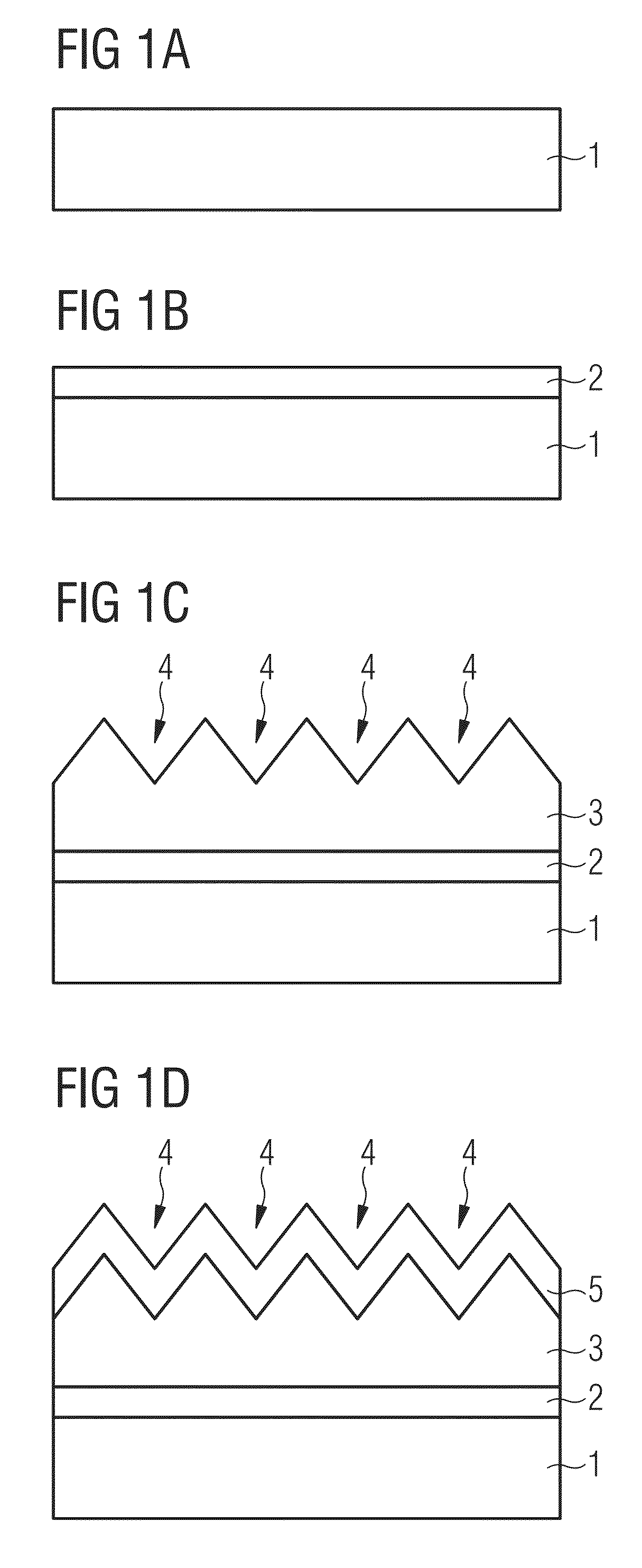Method for producing a thin-film semiconductor body and thin-film semiconductor body
- Summary
- Abstract
- Description
- Claims
- Application Information
AI Technical Summary
Benefits of technology
Problems solved by technology
Method used
Image
Examples
Embodiment Construction
[0036]In the method according to the exemplary embodiment of FIGS. 1A to 1I, in a first step a growth substrate 1 is provided (FIG. 1A). The growth substrate 1 may, for example, contain sapphire, silicon, gallium nitride or silicon carbide or be formed of one of these materials.
[0037]In a next step a seed layer 2 is applied epitaxially onto the growth substrate 1 (FIG. 1B). The seed layer 2 is here formed of gallium nitride.
[0038]In a next step a buffer layer 3, which is here likewise formed of gallium nitride, is applied epitaxially onto the seed layer 2. On epitaxial application of the buffer layer 3, the growth conditions are adjusted such that recesses 4 form, which have the shape of inverted right pyramids with a regular hexagon as base (FIG. 1C). To this end, the temperature during epitaxial deposition here amounts to 850 C.
[0039]In a next method step, a continuous stop layer 5 is applied in direct contact onto the recesses 4 (FIG. 1D). In the process, the shape of the recesse...
PUM
 Login to View More
Login to View More Abstract
Description
Claims
Application Information
 Login to View More
Login to View More - R&D
- Intellectual Property
- Life Sciences
- Materials
- Tech Scout
- Unparalleled Data Quality
- Higher Quality Content
- 60% Fewer Hallucinations
Browse by: Latest US Patents, China's latest patents, Technical Efficacy Thesaurus, Application Domain, Technology Topic, Popular Technical Reports.
© 2025 PatSnap. All rights reserved.Legal|Privacy policy|Modern Slavery Act Transparency Statement|Sitemap|About US| Contact US: help@patsnap.com



